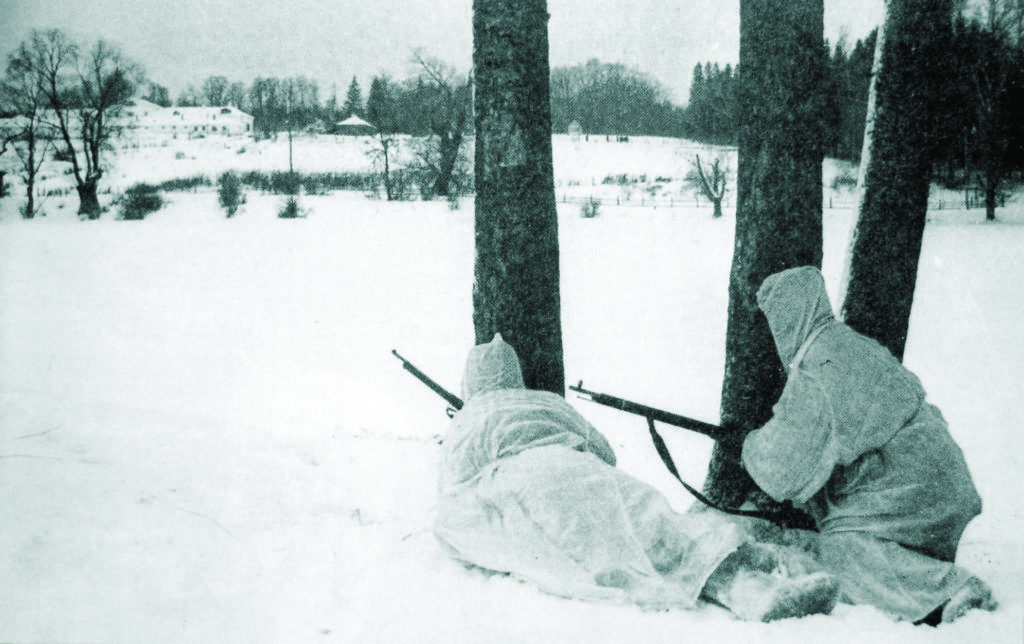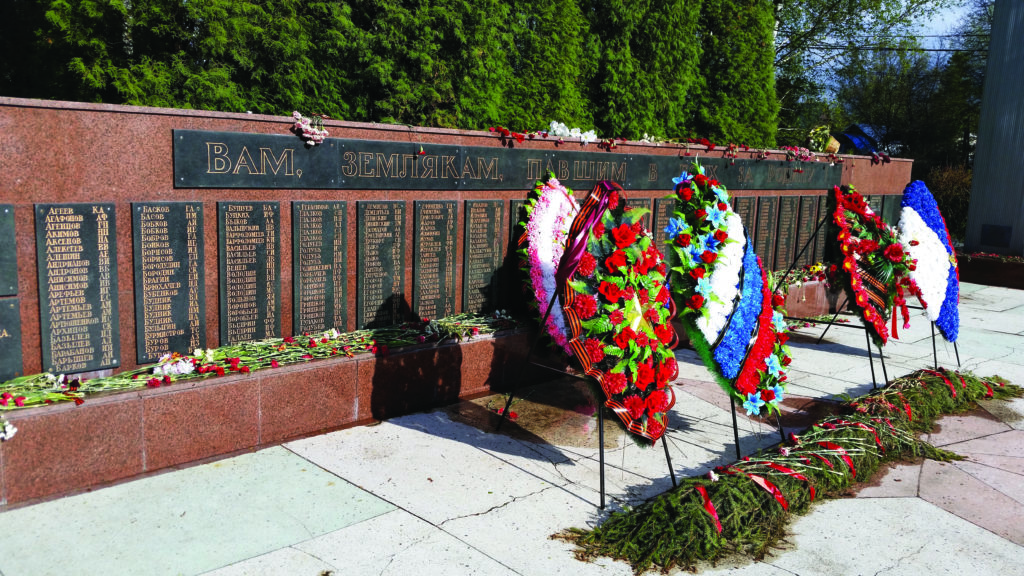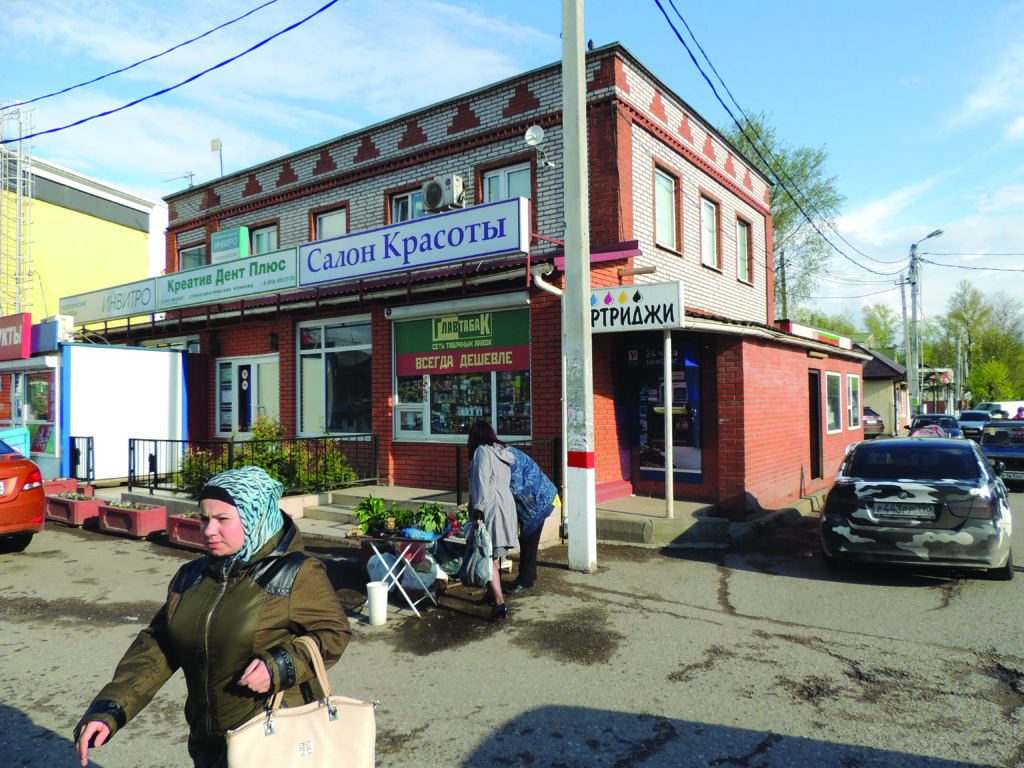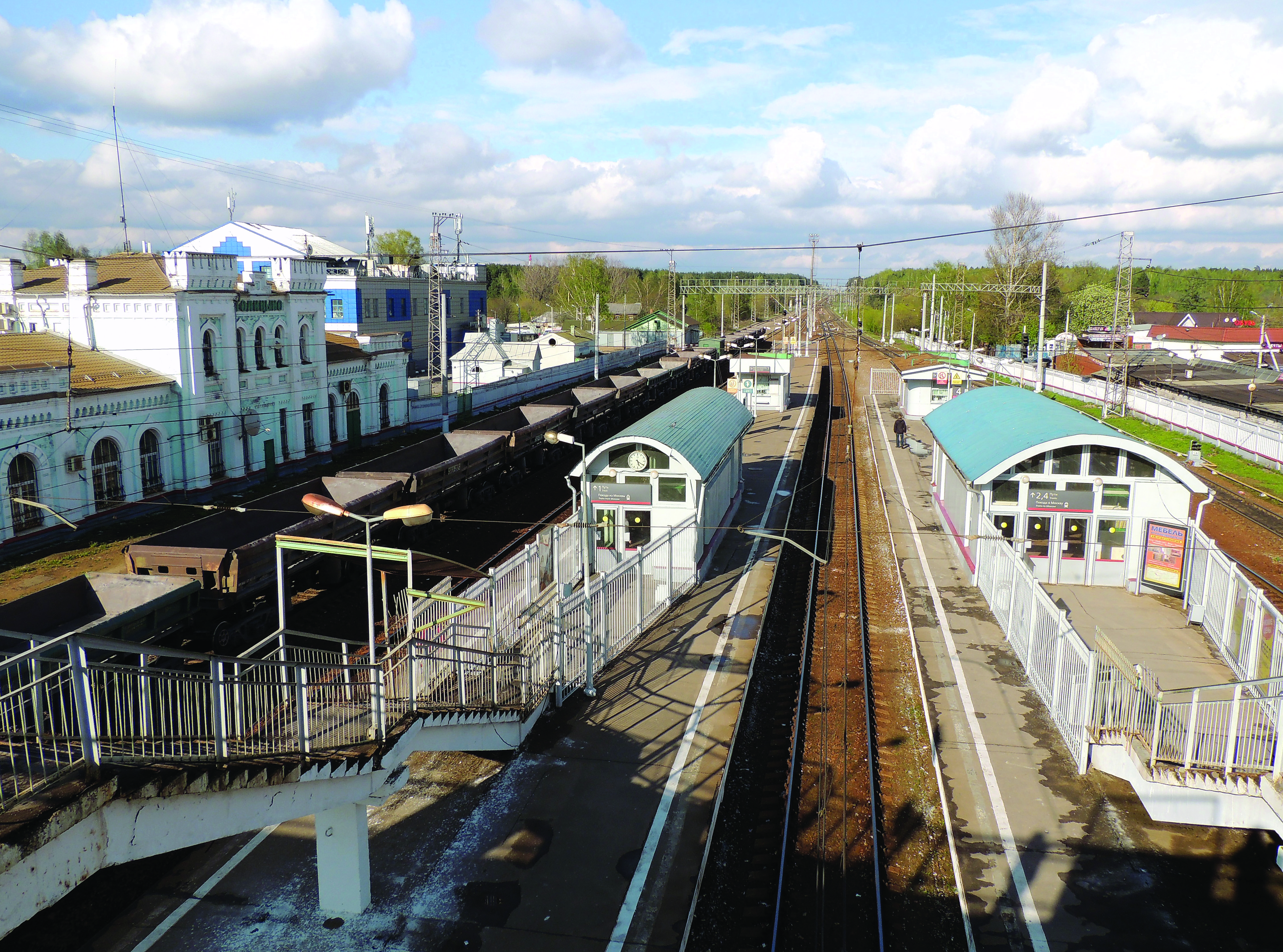Author Bill Yenne explores the little-known World War II site.
THE LAST PATCHES OF WINTER SNOW crunch beneath my feet as I make my way through the birch forests along the banks of the Vyazemka River. With the new foliage of spring bursting forth, it is hard to imagine the blustery days of Russia’s infamous winter when the season’s snow fell. It is also hard to imagine that, amid this peaceful landscape, one of history’s most terrible battlefronts bisected this very spot.
In Golitsyno they remember: they know all too well the winter cold and what happened here in December 1941, when the German armies churned through the snowbanks in their last-gasp effort to reach the gates of Moscow.
It was here in Golitsyno, just 27 miles west of Red Square, that the eastward advance of the Wehrmacht’s Army Group Center came to a halt. While other German units made it closer to Moscow, the stand at Golitsyno most resonates with Russians today because the small town lies on the Minsk Highway (Minskoye Shosse), the important main road between Moscow and Western Europe. It was on this same route, 50 miles west at the Battle of Borodino, that Napoleon defeated Mikhail Kutuzov in 1812 in the final clash before the French general marched into Moscow.
The war against Napoleon has always been known in Russia as the “Patriotic War,” and the war against Hitler was, and still is, remembered as the “Great Patriotic War.” Both wars are ingrained into the Russian national narrative: Pyotr Tchaikovsky wrote an overture about the former and Dmitri Shostakovich wrote symphonies about the latter, providing part of the soundtrack to Russian historic memory. And if there is a main highway connecting the historic memory of those wars, it is the Minsk Highway.
Driving the highway today, it is easy to grasp the direct link it represents between Moscow and the West. A wall of large tractor-trailer trucks, hundreds every day, crowds its six lanes, traveling both east and west, bearing markings in German, Polish, French, Dutch, Danish, Hungarian, and English—as well as Russian.
On June 22, 1941, the German army swept into the Soviet Union at the start of Operation Barbarossa, the largest military operation of all time. Barbarossa was unbelievably successful at first; the blitzkrieg raced across the landscape, capturing in weeks a swath of the Soviet Union larger than Germany itself.
German field marshal Fedor von Bock’s Army Group Center was on a trajectory that led it east along the Minsk Highway directly toward Moscow. By September, the group had captured the city of Smolensk, 900 miles from Berlin and only 250 miles from Moscow. Field Marshal Günther von Kluge’s Fourth Army took the village of Borodino on October 16 and, five days later, it passed through Naro-Fominsk, a town 40 miles southwest of Red Square. German lieutenant Kurt Gruman wrote in his diary: “Nothing could stop us; we quickly surmounted the mined fields and blown-up bridges.” The final collapse of the Soviet Union seemed at hand.
By mid-November, Moscow was caught in Army Group Center’s ever-tightening pincer, but then snowflakes filled the air. Heavy snow began to fall and temperatures drastically plummeted. On November 16, Gruman wrote of the cold that “at night it tortures us” but, with the snow, “the morning is beautiful, almost like a fairy tale.”
On Monday, December 1, supported by a withering artillery barrage, the Germans launched their final assault east. On Kluge’s front, the Fourth Army’s 258th Infantry Division managed to break through the Soviet lines, pushing relentlessly forward in the drifting snow. They finally reached the small, unremarkable village of Golitsyno, signifying the high-water mark for the invaders from the west.

Here and in the woods around the frozen Vyazemka, the region’s coldest winter of the 20th century stopped them. The mercury in thermometers slumped to around 30 degrees below zero. In these same woods where the icy patches crumble beneath my steps, the German offensive quite literally began to freeze to death. Everything became frozen, from human extremities to the liquid lubricants in German vehicles. “The burden of morale was extreme,” wrote Gruman. “The cry of ‘medic’ ran through the fighting like stray fire, and the cry of ‘machine guns forward’ was not heard.”
While the intense cold halted the Wehrmacht’s approaches as they advanced east across the Soviet Union, it was the appearance of ghostly specters dressed in white that finally defeated the freezing men. In his 1964 history of the campaign, Soviet Marshal Vasily Sokolovsky described these white-clad stalwarts as “battle-hardened Siberian troops, in strong defensive positions,” and that an “icy blizzard swept across the snow-covered landscape.” The Siberians had mastered this sort of frigid weather and could move while the rest of the battlefield ground to a standstill. The frostbitten Germans became easy prey for Siberian riflemen.
Natalya Kravchenko, then a child living in Nikolina Gora, a town nine miles north of Golitsyno, recalled in a Russian oral history that it was “difficult to imagine the speed at which the Siberian troops were moving forward. They used to sleep only two or three hours a day.”
Golitsyno was not the only place where the German advance toward Moscow froze in place that week. Other German units, such as the 2nd Panzer Division at Khimki, northwest of the capital city, were also stopped in their snowy tracks—but Golitsyno was the place where the arrow, pointed at the heart of Moscow from Berlin through Borodino, was broken.
Today, I stand on a pedestrian overpass in Golitsyno, looking down at the pale blue Tsarist-era railway station. I chuckle at the station’s gaudy architecture and ornamentation that seems, to recall the words of Kurt Gruman, “almost like a fairy tale.” The station would have presented a surreal contrast to the shabby and haggard German troops who found themselves here amid the chaos and destruction of December 1941.
I watch a train pass, headed eastward. I know the people inside it will be at Moscow’s Belorusskaya terminal in around half an hour. I have often read about how close the Germans had come to the Soviet capital, but standing here watching the train disappear into the distance almost gives me a chill.

With a current population of 17,500, Golitsyno is an unassuming town, consisting mainly of modest one-story homes and a scattering of five-story, ’60s-era “Khrushchev apartments” around its periphery. Petrovskoye Shosse, the main street, runs parallel to the railway line and has several shops and grocery stores. The streets are busy, and people move about purposefully, shopping or heading home from the train station. I watch as a young woman, probably a commuter, pauses to buy a potted plant from an older woman on the corner.
Aside from the train station, and perhaps some of the older wooden houses sprinkled about town, there is little left here from 1941. Everything that emerged from beneath the snow during the spring thaw of 1942 was long ago scrapped or left to decompose. But the memories endure, and they are alive and well.
Strolling through town, I pause at the war memorial at the corner of Kommunisticheskiy Prospekt and Vindavskiy Prospekt, one long block south of the train station. In the afternoon sun, I study the wreaths, placed here for Victory Day, May 9, when news of Germany’s surrender finally reached Moscow—and Golitsyno—in 1945. I think about how the town’s residents must have received that news, their memories of 1941 still fresh, and how even today those events of 1941 still figure into the Russian historic identity.

The train from Moscow’s Belorusskaya station on Russian Railways, the national carrier, takes less than an hour. Your hotel’s concierge can likely help you obtain a ticket. Driving to Golitsyno from central Moscow on the Minsk Highway (Minskoye Shosse), takes around an hour.
WHERE TO STAY AND EAT Given the proximity of Golitsyno to Moscow, it’s best to stay in the capital. I recommend the Marriott Courtyard Moscow City Center, an easy walk from Red Square. Among Moscow’s many dining options, try Ugolëk at 12 Bol’shaya Nikitskaya Ulitsa. Nearly all its dishes (ranging from roast pork and burgers to salmon) are prepared in antique cast-iron ovens.
WHAT ELSE TO SEE AND DO World War II enthusiasts won’t want to miss the Kubinka Tank Museum (Central Museum of Armored Vehicles and Weapons) or Patriot Park, both located in Kubinka, 15 miles west of Golitsyno. Visits can easily be folded into a day trip from Moscow. Public transport connections can be complicated, so it’s best to hire a car with an English-speaking guide from Travel All Russia. The Patriot Park website offers an all-inclusive day package with hotel pickup and drop-off in Moscow. Within Moscow, be sure to check out sprawling Victory Park, which celebrates the Soviet victory in World War II.





